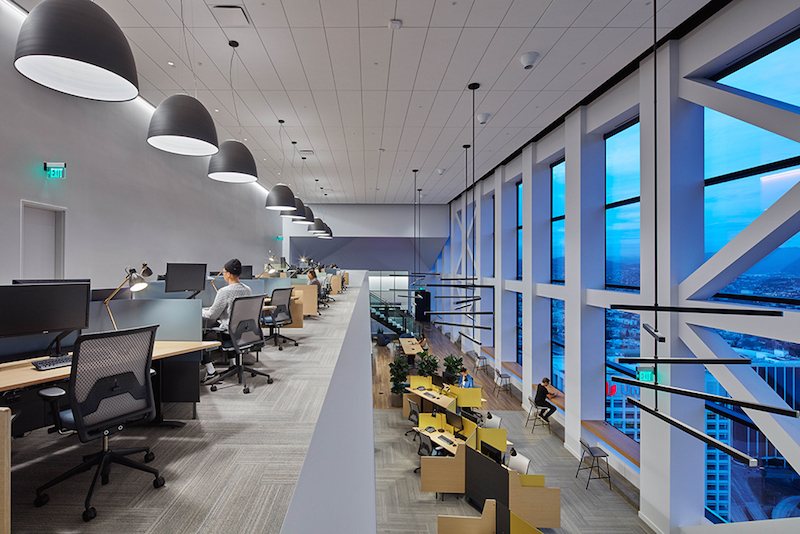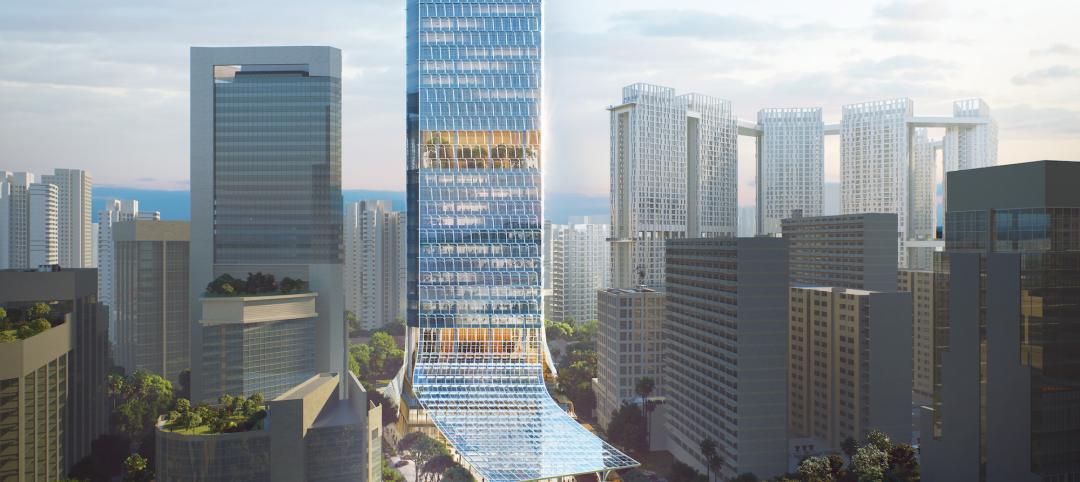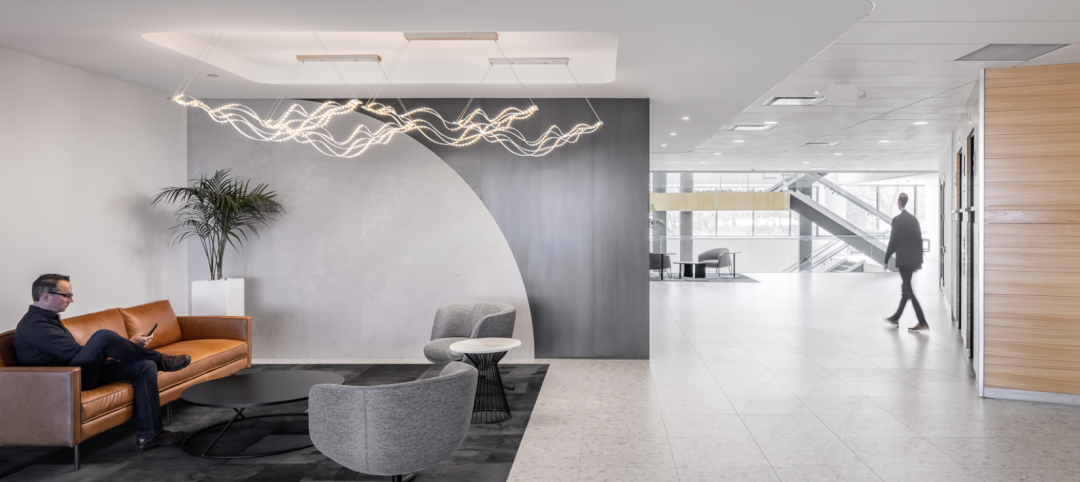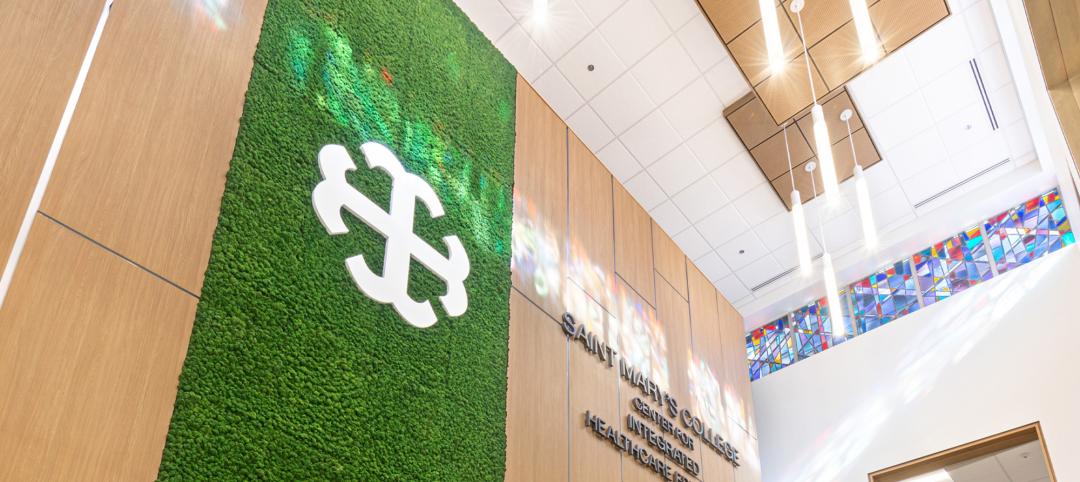When Joe Lozowski took over Tangram Interiors about 15 years ago, the Los Angeles-based distributor of office furniture was down on its heels. “Just being a furniture provider was not an exciting story,” recalls Lozowski about a company that dates back to 1963.
So the first thing he did after assuming control was to reach out to architects, designers, and clients about what they wanted from companies like his.
Fast forward to the present: Tangram Interiors has six furniture dealerships in southern California and 300 employees. It is the area’s second-largest flooring contractor. And under Lozowski’s leadership, Tangram has diversified into furniture customization (more than 40 of its employees are designers), fabrication, technology, and a “move management” business called Tangram Onsite.
Tangram Interiors’ revenue is expected to hit $180 million in 2017, from $127 million in 2014. (Add another $20 million or so from direct sales via Steelcase, its main furniture supplier.) Its growth engines are a custom furniture division Tangram Studio, which Lozowski started in 2004, and whose sales are projected to reach $12 million in 2017, from $7.75 million in 2014; and Tangram Technology, started in 2013, which is on pace to hit $5 million in revenue this year from $2.3 million in its first full year in operation.
Lozowski, 58, the company’s president and CEO, says his goal this year is to expand its Studio brand to a national level. He told GlobeSt.com that Tangram currently is installing projects for clients in Seattle (where it’s working with Juno Therapeutics, a biotech firm, to co-design furniture for 12 floors and build technology into that furniture), Portland, San Francisco, Dallas, Chicago, and New York.
Lozowski recalls that his company’s path toward diversification began when, around the time he took over Tangram Interiors, he was approached by a client who wanted furniture “that looked like it was made at Home Depot,” with a rough-hewn, DIY appearance. He accepted that commission, which got him thinking “maybe this is something we can make a business from.”
Tangram Interiors is not an interior design firm, Lozowski explains. Its design team, which includes 45 consultants, works with manufacturers, as well as its clients' designers, architects, engineers, and project managers to develop schematics for resilient workplaces, a concept borrowed from Steelcase that views office space as an adaptable ecosystem that evolves over time. Its principles revolve around design for wellbeing and providing employees with ranges of options within the workplace.
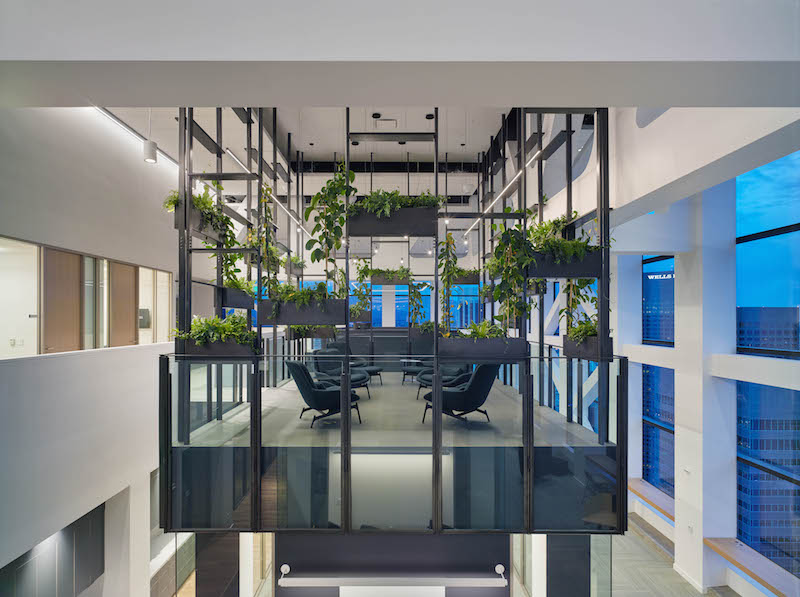 Boston Consulting Group's offices in downtown Los Angeles include 30 meeting rooms and 24 private offices. Image: Courtesy Tangram Interiors.
Boston Consulting Group's offices in downtown Los Angeles include 30 meeting rooms and 24 private offices. Image: Courtesy Tangram Interiors.
Tangram Interiors’ client list includes Perkins + Will, Loyola Marymount College (with which it has worked for 10 years), Hulu, Brookfield Residential, Experian, Intuit, and UCLA Health. Tangram Studio helped with the furniture design for Tangram Interiors’ headquarters. (Lokowski refers to his showrooms as “learning labs.”)
Among Tangram Studio’s more recent projects is its collaboration with Boston Consulting Group (BCG) and the design firm Shubin Donaldson to create a new concept for the 45,000 sf of office space that BCG occupies in the north tower of City National Plaza in downtown Los Angeles. Tangram Studio’s research discovered that most of BCG’s consultants were in the office only 25% of the time. So its design solution includes 130 traditional workstations and 80 “touchdown” spaces with standing height stations incorporated into metal railings, lounge seating, and semi-private spaces throughout the office.
The design for this project includes 24 private offices and 30 meeting rooms within the office interior, leaving the perimeter open to allow for better outside views.
Lozowski started Tangram Technology after hearing from clients about how they couldn’t find reliable contractors that could coordinate the details between office design and technology. He says that, except for two big providers, this sector remains highly fragmented. Opportunities lie in the fact that “beside your chair, there’s nothing in an office that isn’t attached to a wire.”
Lozowski observes that most office designs lack “vision” because too many clients are still focused on what’s the least they can spend. He says the key to successful office furniture design is “mass customization.” And what’s winning clients over the Tangram Interiors is “that people love we’re co-designing with them.”
Related Stories
Government Buildings | Aug 7, 2023
Nearly $1 billion earmarked for energy efficiency upgrades to federal buildings
The U.S. General Services Administration (GSA) recently announced plans to use $975 million in Inflation Reduction Act funding for energy efficiency and clean energy upgrades to federal buildings across the country. The investment will impact about 40 million sf, or about 20% of GSA’s federal buildings portfolio.
Market Data | Aug 1, 2023
Nonresidential construction spending increases slightly in June
National nonresidential construction spending increased 0.1% in June, according to an Associated Builders and Contractors analysis of data published today by the U.S. Census Bureau. Spending is up 18% over the past 12 months. On a seasonally adjusted annualized basis, nonresidential spending totaled $1.07 trillion in June.
Office Buildings | Aug 1, 2023
Creating a nurturing environment: The value of a mother’s room in the workplace
Since becoming an architect, Rebecca Martin of Design Collaborative has drawn a mother’s room into numerous projects. But it wasn't until she became a mom that she fully appreciated their importance in the workspace.
Adaptive Reuse | Jul 27, 2023
Number of U.S. adaptive reuse projects jumps to 122,000 from 77,000
The number of adaptive reuse projects in the pipeline grew to a record 122,000 in 2023 from 77,000 registered last year, according to RentCafe’s annual Adaptive Reuse Report. Of the 122,000 apartments currently undergoing conversion, 45,000 are the result of office repurposing, representing 37% of the total, followed by hotels (23% of future projects).
High-rise Construction | Jul 26, 2023
A 33-story Singapore tower aims to reimagine work with restorative, outdoor spaces
Architecture firm NBBJ has unveiled design details for Keppel South Central, a commercial tower in Singapore. The project, which is slated for completion in late 2024, will transform the original Keppel Towers into a 33-story, energy-efficient building that aims to reimagine work by providing restorative spaces and connections to the outdoors.
Multifamily Housing | Jul 25, 2023
San Francisco seeks proposals for adaptive reuse of underutilized downtown office buildings
The City of San Francisco released a Request For Interest to identify office building conversions that city officials could help expedite with zoning changes, regulatory measures, and financial incentives.
Market Data | Jul 24, 2023
Leading economists call for 2% increase in building construction spending in 2024
Following a 19.7% surge in spending for commercial, institutional, and industrial buildings in 2023, leading construction industry economists expect spending growth to come back to earth in 2024, according to the July 2023 AIA Consensus Construction Forecast Panel.
Office Buildings | Jul 24, 2023
A twist on office conversions maximizes leasable space
A recent NELSON Worldwide project is made more suitable for multiple workplace tenants.
Biophilic Design | Jul 20, 2023
Transform your work environment with biophilic design
Lauren Elliott, Director of Interior Design, Design Collaborative, shares various ways biophilic design elements can be incorporated into the office space.
Office Buildings | Jul 20, 2023
The co-worker as the new office amenity
Incentivizing, rather than mandating the return to the office, is the key to bringing back happy employees that want to work from the office. Spaces that are designed and curated for human-centric experiences will attract employees back into the workplace, and in turn, make office buildings thrive once again. Perkins&Will’s Wyatt Frantom offers a macro to micro view of the office market and the impact of employees on the future of work.


